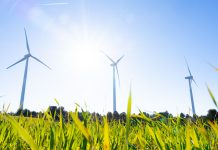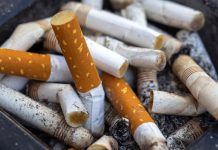AG looks at the European Commission’s key priorities in regards to energy, and the challenges ahead…
The EU is facing a crisis of confidence that has settled over it like low cloud. Trust of citizens is in short supply as is faith in the future. The new Commission, which began its work at the end of 2014 under the presidency of Jean-Claude Juncker has recognised that belief in the EU has to be rebuilt as a matter of urgency, and that Europeans need to see a route forward to employment and economic growth.
At the beginning of his term in December, Juncker set out his political priorities and published a work programme to be achieved by the Commission within 12 months. 1 It is a statement of intent in which delivery and practicality are policy essentials and in which Juncker has chosen to tackle one of the biggest long-term problems facing the Union, that of energy and the challenge of imposing sustainable solutions to rising costs and insecurity of supply.
Currently the Union imports 53% of its energy at a cost of €1bn a day 2 feeding into markets that are neither integrated nor working under common rules. Juncker’s chosen solution is to create an Energy Union and give fresh impetus to climate change policies. To achieve these objectives he has taken the unprecedented step of reinforcing the Commission’s energy portfolio by appointing Maroš Šefčovič vice president for Energy Union to act as team leader co-ordinating the work of several Commissioners including those for Industry and the Internal Market, as well as Miguel Cañete, who now fills the combined role of Commissioner for Climate Action and Energy.
The Energy Union is meant to impose an element of strategic decision-making over the EU’s energy import trade, particularly as regards natural gas supplies from Russia. As President Juncker set down in his mission letter to Maroš Šefčovič in November, “we need to pool our resources, combine infrastructures and unite our negotiating power vis-à-vis third countries.” 3 About 30% of the EU’s gas currently comes from Russia, in a set-up where suppliers, owners of pipelines and countries they transit, all have their own political and commercial agendas, most of which conflict more or less all of the time, with Europe coming in a poor fourth as buyer.
The most recent gas dispute between Ukraine and Russia resulted in severed supplies in June 2014, but it is only the latest in a series going back to 2006. In each of these the EU has been overtaken by events. The 2014 shut-off was ended by an agreement moderated by Energy Commissioner Günther Oettinger in December, and was the most effective intervention by the EU to-date, however, the agreement only lasts until March 2015, after which, given the current armed conflict in eastern Ukraine, supplies to Europe could once again be under threat.
Oettinger’s work to broker the December deal signalled the EU’s commitment to get a grip. As the June crisis developed, President Josè Manuel Barroso introduced an Energy Security Strategy, framed by a hardening of language, Oettinger describing the current state of the energy trade in undiplomatic terms, “We want strong and stable partnerships with important suppliers,” he said, “but must avoid falling victim to political and commercial blackmail.” 4
A certain way of avoiding this is for the EU to develop its own sustainable sources of supply, a point President Juncker stressed in his letter to Maroš Šefčovič in which he told the vice president, “We need to strengthen the share of renewable energies on our continent. This is not only a matter of responsible climate policy. It is, at the same time, an industrial policy imperative if we still want to have affordable energy at our disposal in the medium term.” 5
The Commission isn’t short of guidance for this. The EU has emissions reduction targets to meet by 2020, as well as a climate action framework leading to 2030 and a low carbon roadmap out to 2050. Vice President Šefčovič and Commissioner Cañete are also working towards delivering proposals to the UN’s Climate Change Conference in Paris in December 2015.
On a more practical level and in line with President Juncker’s policy objectives, the EU is currently investing over €2bn in renewable energy projects under the NER 300 programme. NER 300 concluded its award process in July 2014, launching 42 projects across 20 of the 28 Member States. 6 They are investigating the commercial viability of a range of technologies including concentrated solar, wind and bioenergy. A carbon capture project based in the UK receives the largest single award of €300m. Given the Commission’s efforts to achieve Energy Union, NER 300 however has only funded one cross border project. GEOSTRAS is a French-German collaboration to generate geothermal electricity and heat from a source near Strasbourg. It is one of 3 geothermal energy projects that have been awarded a total of €60.8m, large in terms of research investment, but still cheaper than €1bn a day.
1 http://ec.europa.eu/atwork/pdf/cwp_2015_new_initiatives_en.pdf
2 http://ec.europa.eu/energy/en/topics/imports-and-secure-supplies
3 http://ec.europa.eu/commission/sites/cwt/files/commissioner_mission_letters/sefcovic_en.pdf
4 http://europa.eu/rapid/press-release_IP-14-606_en.htm
5 http://ec.europa.eu/commission/sites/cwt/files/commissioner_mission_ letters/sefcovic_en.pdf
6 http://ec.europa.eu/clima/policies/lowcarbon/ner300/index_en.htm
Tony Hall
Journalist
AG
editorial@adjacentopenaccess.org
www.adjacentgovernment.co.uk










